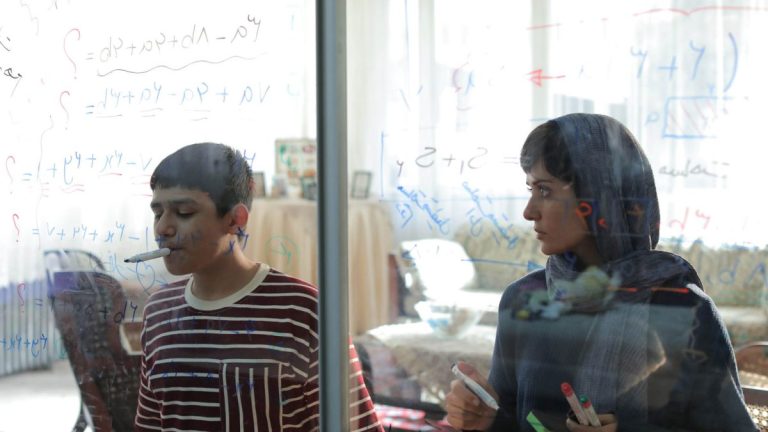How do intimate relations take shape under capitalism? At first glance, this may seem like a peripheral question. After all, isn’t love something natural, private, and intimate that belongs to the heart rather than the economy? There have been efforts to define love, underpin its meaning, and commodify it, catering to the market that finds profit in its fantasies. Yet contemporary Indian independent cinema moves away from stringent and traditional definitions of love. Rather than romantic spectacle, it turns to the everyday choosing instead to show how it unfolds amidst the fractures of an increasingly competitive and isolating world.
Aditya Vikram Sengupta’s “Asha Joar Majhe” (“Labour of Love”) is one such film that attempts to rethink intimacy within the fractures of an increasingly fragmented and alienated world. The film reminds us that love is rarely grand or cinematic, as mainstream media often portrays it. It can be quiet, embedded in the rhythms of daily life, entwined in routine. Against a bleak backdrop that reduces individuals to aspirational subjects striving for upward mobility, “Labour of Love” creates a space to breathe, to exist alongside someone else. It invites us into its silence and stillness, unsettling us in a gentle way.
Set in Calcutta during a period of recession, the film follows the mundane existence of a couple who barely meet despite living in the same house. The man works the night shift at a printing press; the woman works during the day at a purse factory. Their worlds overlap only for a few fleeting moments as he returns home and she steps out for work.
The film unfolds over the course of a single day, inviting us to observe their routines: cooking, cleaning, drying clothes, riding a bus, packing lunch, or simply waiting. Sengupta forces the viewers to practice patience, to slow down, to witness the mundane with care and patience, as if testing our capacity to love through stillness. Few films make the banal feel so sacred.
Even when we barely see the couple together, we sense an intimate connection tying them across time and space. The film’s silence and minimalism resist the hyper-saturation of images and spectacle-driven romantic stories that dominate the capitalist media landscape. Sengupta’s long, meditative takes invite the viewers to feel what cannot be spoken. The emotional texture of their lives gains centrality over the plot. Sound becomes central to this experience.
Sengupta doesn’t treat sound as a background but as a medium that articulates connection and intimacy. The cacophony of city life is juxtaposed with the subtler sounds of domestic life: the hum of a creaking fan, the sizzling sound of water evaporating, and the clattering of pulses falling into containers. What is usually overlooked becomes the emotional core of the film.
Similarly, the city is not portrayed through spectacle but through its sonic textures: a protest blaring in the distance, the rhythmic sweep of a broom on the street. These images are juxtaposed with still shots of the sky, the slow setting of the sun in the evening, and the slow ascent of the lift, creating a temporal dissonance that resists the narrative of speed and acceleration in a capitalist life.

Must Read: The 20 Best Regional Indian Movies of the 2010s Decade
One of the film’s most central aesthetic choices is the recurrent use of the shehnai, an instrument traditionally associated with marriage rituals. Interestingly, the film does not feature the couple’s marriage, nor does the shehnai appear during any ceremonial moment. Instead, the shehnai recurs throughout scenes of mundane domestic activities, such as cooking, bathing, and waiting.
The movie displaces the instrument from its conventional ceremonial context and reinscribes it as a symbol of longing and absence. This defamiliarization serves as a gentle critique of the commodification of love in popular narratives, the version of love sold to us through elaborate weddings, gifts, and consumption.
“Labor of Love” thus presents love as ritualized, as a form of labor that unfolds in the silence of the home. By situating the shehnai within the routines of a middle-class working couple, the film questions normative ideas of love. It seems to be reframing what we call sacred. Are these mundane rituals not as sacred as wedding vows? Does intimacy end with language, or does it sustain itself through these actions? The film tenderly captures the mundane in a meditative way.
Even the most minor details, such as a fish breathing in a container before being cut, food stored carefully in jars, and the gradual evaporation of water from a pan, are given extended screen time. This sensory attentiveness becomes highly meditative, forcing us as spectators to be in tune with our lives and be actually present. While the film portrays urban alienation through the painful waiting that the couple undergoes before they finally meet briefly, reducing the film to a critique of capitalist alienation would be an injustice. Such a reading obliterates the more delicate discourse of intimacy that Sengupta threads through the narrative.
Intimacy in the film is not constructed through conversation or physical closeness, but through a quiet blend of objects and gestures. Rather than dramatizing love through spectacle, the film manifests love as labor itself, where everyday rituals signify care and affection. The lack of dialogue in the film is crucial. The film, stripped of language, lays bare intimacy in its rawest form, that is, sustained not through declarations but through repetition. Sengupta’s film thus insists that genuine connection is built through quiet labor of everyday life.
The couple’s relationship unfolds through a series of shared traces. The woman eats a snack on her bus ride to work. Later, the man eats the same thing at home. The torn trousers he leaves out for her to mend, her saree drying beside his kurta, the phone call he makes to wake her on time, none of these actions involve speech. Yet they function as a language of care and affection. Their temporal disjunction, that is, the impossibility of occupying the same space at the same time, is bridged through the circulation of everyday objects that establishes intimacy.

Also Check: 10 Films the HOF-Men Recommend: 6th Edition
This represents a shift from an earlier mode of intimacy, which was framed around questions of family-making, stability, and financial security, to an intimacy based on connection and mutual understanding. But even in this new economy of connection, the love portrayed in “Labour of Love” stands apart. It refuses the commercialization of intimacy and remains stubbornly ordinary, which cannot be monetized.
One of the film’s most evocative moments occurs when the man flicks his trousers before changing. The scene then abruptly cuts to the woman’s reflection in a mirror, her bindi flickering across the glass. This sharp edit creates a fleeting connection between them, collapsing their separate timelines for a brief second. In another scene, the song “Tumi Je Amar” by Geeta Dutt plays in the background as the man and woman leave and return.
The background score marks this moment with nostalgia and tenderness, rendering the act of leaving home for work not as a routine but as a ritual of separation and longing. The song thus sacralizes the mundane, elevating the gestures of everyday life —waiting, dressing, and walking —into acts of affection.
The meditative quality of “Labor of Love” positions it as an anti-capitalist text, as its slow temporality, refusal of narrative agency, and absence of dialogue resist the acceleration that characterizes contemporary capitalist existence. In an age where love is incessantly mediated through messages, notifications, and constant presence, Sengupta’s lovers communicate through gestures. These embodied, silent acts become a form of quiet resistance, thus locating intimacy in care and repetition rather than consumption and spectacle.
When the couple finally share the same frame, sitting beside each other, shoulders brushing, a brief smile exchanged, their connection at that moment transcends the alienation of urban precarity. The domestic space becomes a fragile sanctuary, a site of tenderness that persists despite systemic constraints. For a few seconds, the oppressive disconnection of their schedule dissolves.
The shehnai music returns as they part again. Their love isn’t sealed in a moment of transcendence. What follows is a daily practice, something they return to in order to endure, to feel a sense of belonging, and to push back against the dehumanizing grind of capitalist life. In the film, love doesn’t go beyond itself; it is not a means of self-realization or an epiphanic experience. Instead, it is portrayed as a way of life, where two people coexist and navigate life together.
For me, the film makes love naked. It strips away embellishments and reveals intimacy in its rawest form, the kind experienced not by grand gestures or constant proximity, but by traces of presence even in absence. It shows how love exists not as two individuals seeking fulfillment, but as a shared way of inhabiting the world, even when time, labor, and exhaustion move against them to keep them apart. Aditya Vikram Sengupta’s “Labour of Love” is a quiet, tender meditation on connection, solitude, and survival. In its stillness, it forces us to look inward, to reconsider our own relationship with intimacy.

![Bare Trees in the Mist [2020]: ‘DIFF’ Short Film Review – The wafer-thin weight of gratitude](https://79468c92.delivery.rocketcdn.me/wp-content/uploads/2020/10/Bare-Trees-in-the-Mist-1-highonfilms-768x428.jpg)



![Forbearance [2022] Review – A badly acted and exhausting cancer-picture](https://79468c92.delivery.rocketcdn.me/wp-content/uploads/2022/09/Forbearance-Movie-Review-768x322.png)
